Haworthias are small, slow-growing, and low-maintenance succulents. Since Haworthia is succulent and stores water in its leaves, their requirement for humidity confuses many gardeners, especially a beginner.
So, in this article, we shall discuss whether haworthia likes humidity or not.
Being a succulent, haworthia prefers humidity levels between 35-45%. Although they can tolerate humidity as high as 60% and as low as 25%, it is best to maintain the humidity around the ideal mark to make them look fleshy and broad. You can maintain humidity by using a humidifier or dehumidifier.
However, make sure not to increase humidity too much. Letting Haworthias have humidity is fine until it exceeds 50-60%. High humidity can result in fungal development.
In this guide, we will talk about Haworthia’s humidity requirements. Since people might be confused, this article will have a detailed explanation. I hope, by the end, all of your confusion will be clear.
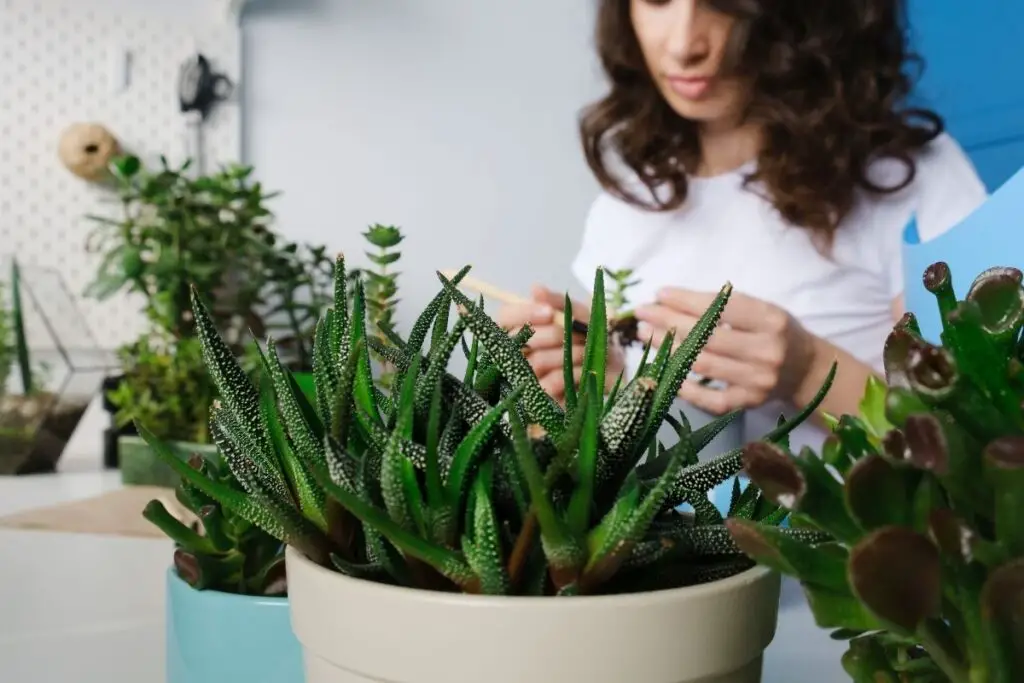
Humidity – High and Low
We all are acquainted with the term ‘humidity’.
It is the amount of water vapor in the surrounding air.
When the environment holds more moisture, the humidity is high.
When the moisture is low, humidity is low.
For measuring the moisture around Haworthias, use a hygrometer to track the humidity level.
It shows measurement in %RH.
A normal humidity range is 40%. If it is higher than 40%, the surrounding area is humid.
Many particles are present in the air for the plant to perspire and evaporate in the high range.
It happens mostly due to frequent rain, fog, or the presence of many plants or trees around your Haworthia.
But, if the range is lower, the environment is less humid or dry.
When few particles are present, the plant doesn’t perspire.
As a result, the succulent becomes dry and brittle.
It occurs when the weather is too dry.
Why is humidity important for Haworthias?
Haworthias will not tolerate very high humidity.
But, some humidity is essential for their growth, especially during dry climates.
It helps Haworthias grow faster and make their leaves juicy and fleshy.
Haworthias in their natural habitat receive cool onshore winds, low clouds, some fog or slight drizzle on the plants.
While giving Haworthias high humidity, you need to pay attention to the plant’s reaction.
Check whether they are doing well or the leaves are turning mushy.
High humidity accompanied by hot weather can result in fungal infections and rotting.
So be careful while increasing.
Don’t raise the humidity too much. Try to keep it within 40-50%.
What are the signs of low humidity in Haworthias?
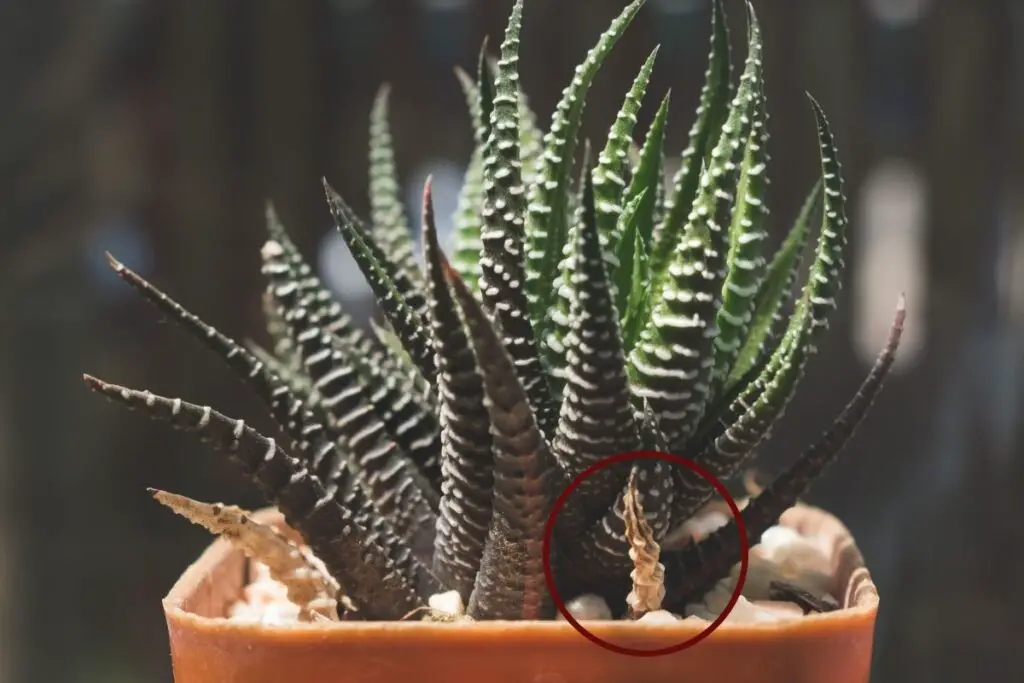
Not all Haworthias enjoy high humidity. Most of the varieties do best at 25-35% relative humidity.
Some varieties, for example, Haworthia attenuata, enjoy growing in high humid areas.
Haworthias are winter growers, but they grow well at a slightly warm temperature ranging between 60-75°F.
The symptoms of low humidity are most probable the signs of underwatering.
Low humidity means the plant lacks moisture and might start browning at the tips and edges.
How can I increase humidity for my Haworthias?
You must make sure that humidity stays within 40-50%.
If the humidity of your region stays too low most of the time, you have to take certain steps to increase the humidity.
There are several ways:
Misting
Misting Haworthias to increase humidity is easy and simple.
But the only problem is you need to re-apply frequently if the weather in your region is too dry.
If they are in the ground, mist them every few days to maintain the right humidity.
This will keep your plant hydrated and will stop them from drying frequently.
You can also install a misting system in your garden bed to create such arrangements.
Looking for gardening supplies? We have tested 100's of products before recommending them to you guys. Check out our best pick below:
| Image | Gardening Supplies | Best Price? |
|---|---|---|
 Top
Top Top
Top | Raised Garden Bed Kit | Check On Amazon |
 | XLUX Soil Moisture Meter, Plant Water Monitor, Soil Hygrometer Sensor for Gardening, Farming, Indoor and Outdoor Plants, No Batteries Required | No Results |
 Top
Top Top
Top | 82 Pcs Garden Tools Set and Extra Succulent Tools Set | Check On Amazon |
 | Joeys Garden Expandable Garden Hose with 8 Function Hose Nozzle, Lightweight Anti-Kink Flexible Garden Hoses, Extra Strength Fabric with Double Latex Core, (50 FT, Black) | No Results |
 Top
Top Top
Top | Dual Chamber Compost Tumbler | Check On Amazon |
 Top
Top Top
Top | Sunnyglade Plant Stakes | Check On Amazon |
 Top
Top Top
Top | Organic Cold Pressed Neem Seed Oil | Check On Amazon |
 Top
Top Top
Top | Mighty Mint Gallon :-Insect and Pest Control Peppermint Oil | Check On Amazon |
 Top
Top Top
Top | Scotts DiseaseEx Lawn Fungicide | Check On Amazon |
 Top
Top Top
Top | Jacks Classic 20-20-20 All Purpose Fertilizer | Check On Amazon |
 Top
Top Top
Top | 30,000 Seeds Pollinator Attracting Wildflower Mixture | Check On Amazon |
 Top
Top Top
Top | Survival Vegetable Seeds Garden Kit-Over 16,000 Seeds | Check On Amazon |
Group planting
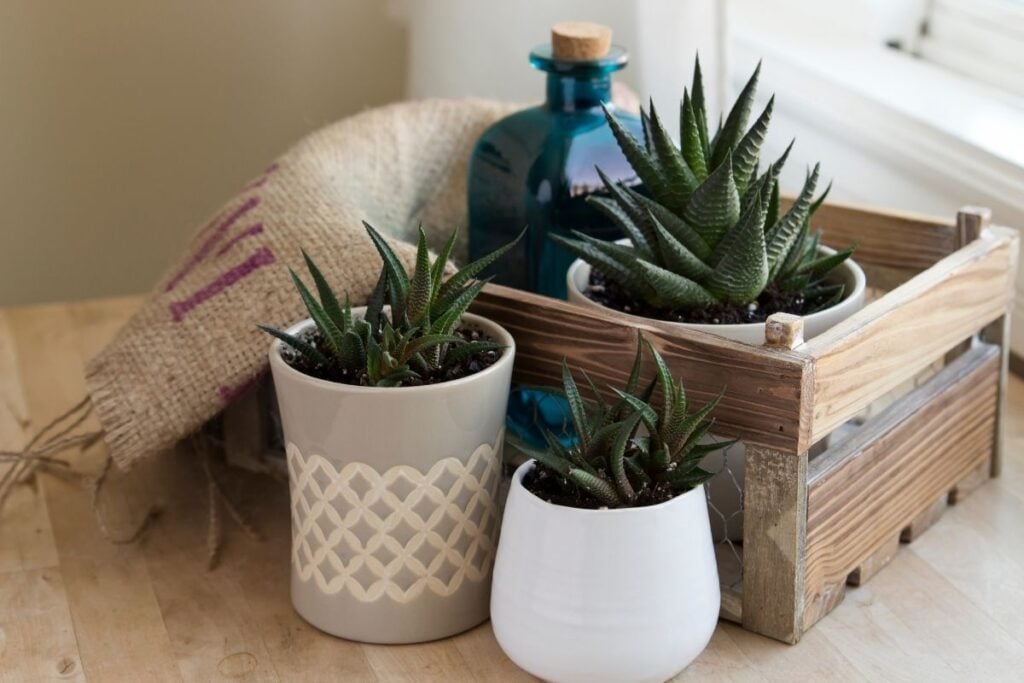
You can do this when you grow many plants along with Haworthia.
Plant them close to each other to create their humidity independently, as per their need.
Grouping can increase the humidity by 15%.
Make sure they are close but also leave some space to allow proper airflow around the plants.
Create levels with your plants
Plant some tall plants as companions for Haworthia.
Plant those plants at the back or beside Haworthia.
The position should be that the water drips from the tall plants and falls upon these succulents.
This will maintain the plant’s moisture level, and you can also worry less about watering them.
The dropping of the water droplets will also keep the soil moist.
But make sure they dry out quickly.
Otherwise, the constant saturation can cause prolonged dampness.
Place water trays
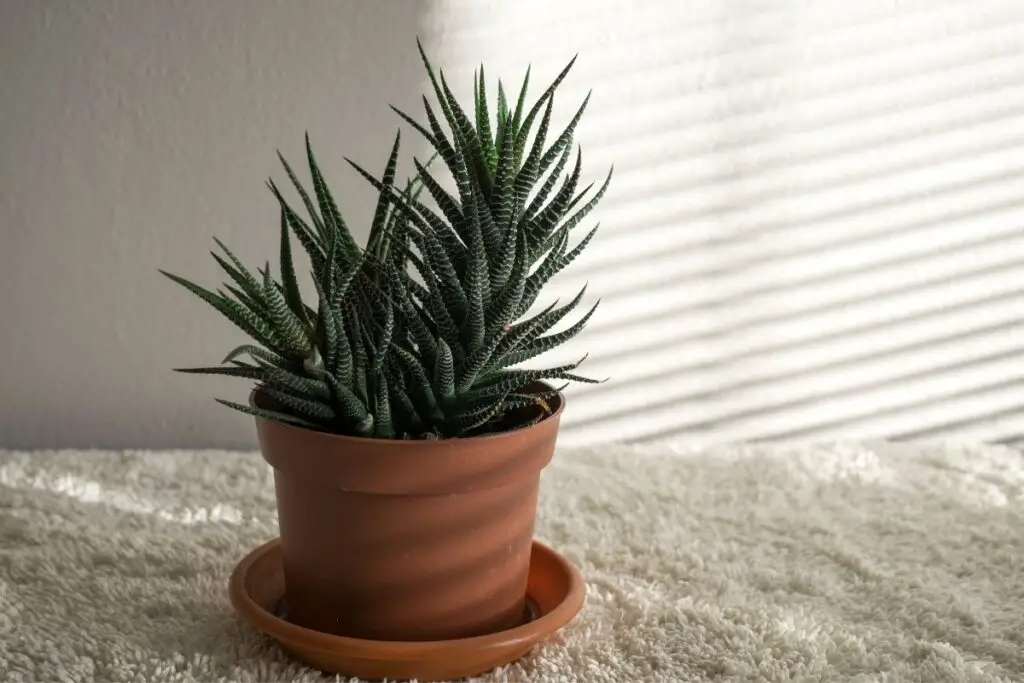
Take some small trays and pour water into them.
Now, place the trays around the Haworthias.
The water will evaporate and mix with the air and increase moisture in the air.
This will raise the humidity enough.
Use shallow trays or bowls instead of deep bowls.
Pebble trays
This is applicable if you grow Haworthias in containers.
Many people do it because these succulents are small and can endure indirect sunlight.
However, you can even keep the potted Haworthias outdoors if you can fulfill their basic needs outside.
Take a tray and fill it with water and some pebbles.
Now, put the pot over the tray.
The water will evaporate and increase the humidity around your Haworthia.
The stones will stop the container from sitting directly on the water.
It also prevents prolonged dampness.
This can increase humidity greatly.
Make sure to check the plant’s reaction after increasing humidity.
If it is doing good, continue. But if it shows negative signs, stop doing it.
Apply these methods only when your region receives very low humidity or when the plant show signs of low humidity.
Normally, they do well at average home humidity, ranging between 35-40%.
How will high humidity harm my Haworthias?
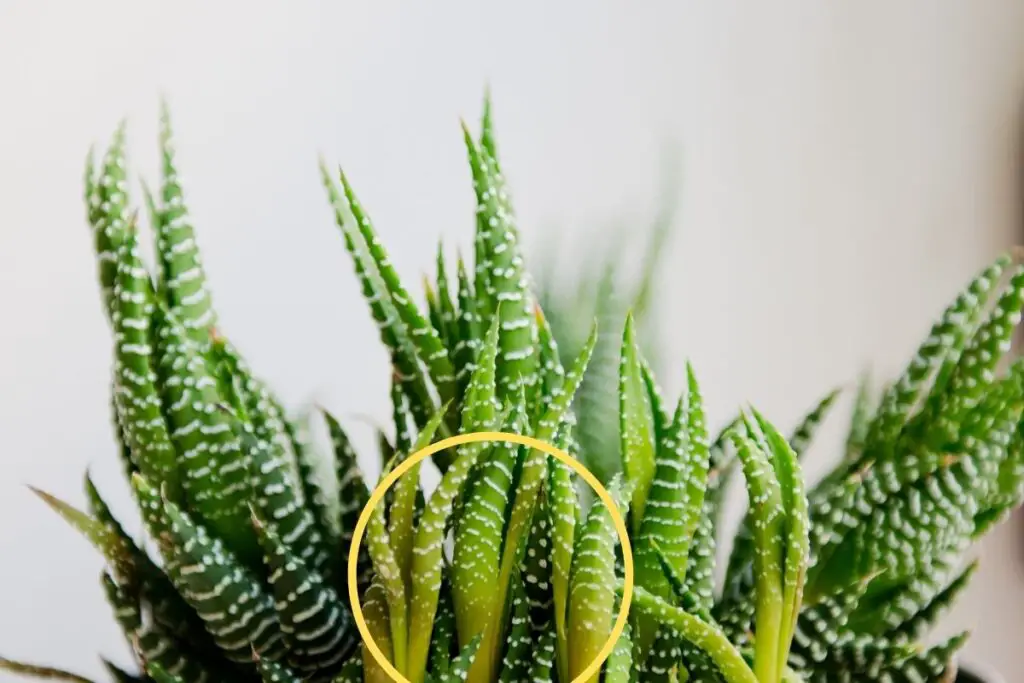
I have mentioned multiple times that Haworthias don’t require high humidity.
If your Haworthia is doing fine in the humidity your region receives, don’t try to bother them by increasing or decreasing humidity.
Since Haworthia attenuata like high humidity, many gardeners randomly increase the humidity of the plant’s surrounding area without any knowledge.
This results in the rotting of the plant.
The plant suffers the most when it receives high humidity and a hot climate.
When the plant suffers from high humidity levels, it will display some signs:
- Due to high humidity, the leaves will become damp and stick together.
- The leaves may also feel mushy.
- The soil will start forming molds.
- Excessive moisture levels will make the plant vulnerable to fungal diseases.
- Eventually, the plant will start rotting.
The plant will show some signs at the initial stage as a warning, like damp and mushy leaves, molds, or water droplets.
Take precautions from that time only so that the damage doesn’t progress.
How can I decrease humidity?
- For an indoor plant, fixing de-humidifiers can solve the problem.
- For outdoor plants, maintain a space of at least 3-4 inches between each plant.
- If you have grouped many plants, remove them during the hot summer months.
- Try to increase the air circulation.
How to take care of the Haworthias in humid conditions?
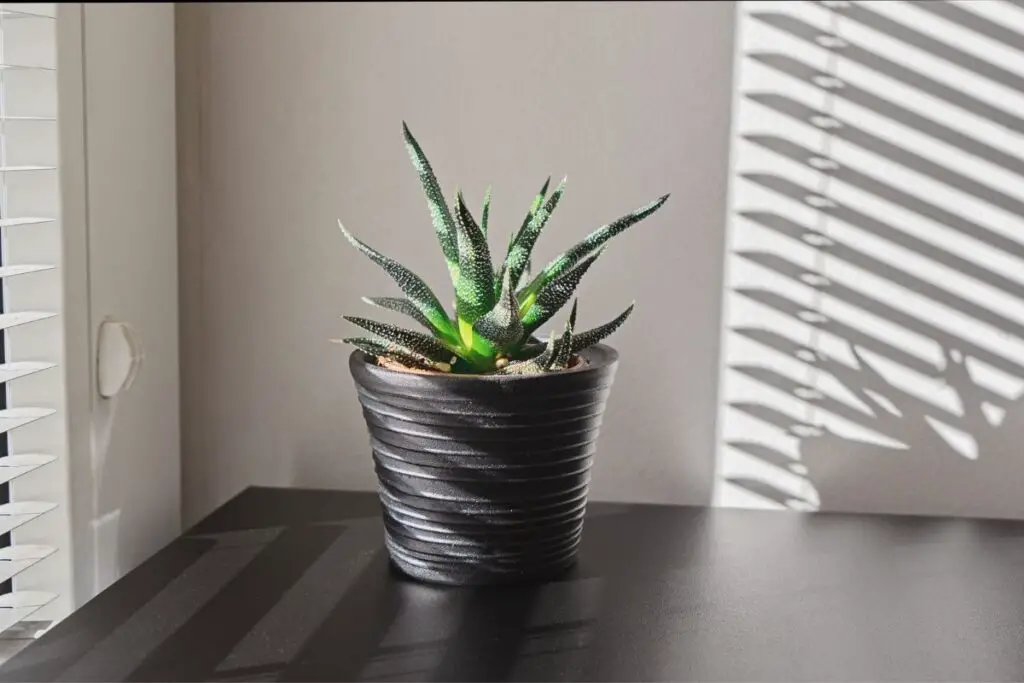
Giving Haworthias humidity separately can be quite tricky.
These succulents can hold water in their leaves.
That is why their water demand is very less.
But, to continue storing moisture in the leaves, they will need enough moisture from an outside source.
In the winters, they will require less water.
You can maintain the humidity level if you see any low humidity signs.
But in the summers, the weather is too hot, and if they receive high humidity, it can rot them and make them susceptible to diseases.
It occurs mostly during fog or rain.
That is why you need to follow some care tips to take care of Haworthias in humid conditions.
Below I have shared some tips:
Let them have some sunlight daily.
An adequate amount of sunlight can reduce the humidity level to some extent.
Let Haworthia have direct morning sunlight daily for at least 3-4 hours.
If you have fixed shading nets to protect them from the direct sunlight, remove it in the early morning.
Then when the heat starts getting intense, put on the shade again.
Also read: How Much Light Does Haworthia Need? (Haworthia Light Requirements)
Use a well-drained soil mix.
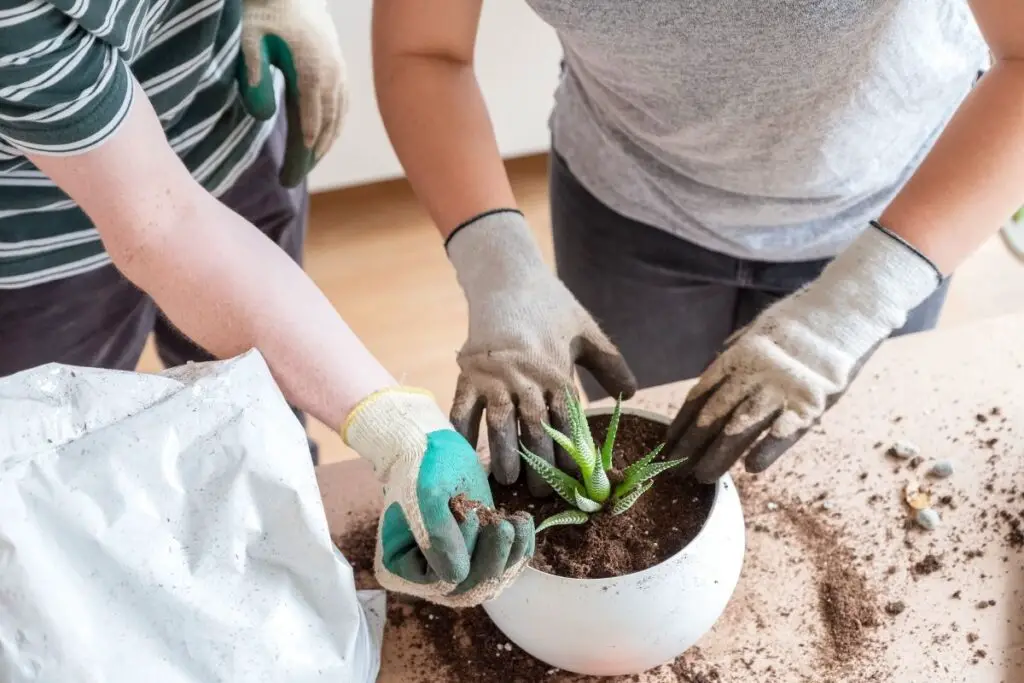
Always use porous and well-drained soil so that the soil at least drains the excess moisture.
If you grow Haworthias in a container, use a pot with drainage holes.
While making the soil mix, avoid peat moss.
It can hold moisture and increase humidity to a great level.
It can result in the rotting of the plant.
Add pumice to your Haworthia soil mix.
In a highly humid region, it is essential to use a soil mix to keep Haworthias dry.
These succulents experience dry conditions. It is their natural feature.
If they don’t stay dry, they will rot.
Adding pumice to your Haworthia soil mix can decrease the moisture level trapped in the soil.
If you ever witness signs of high humidity in your succulents, fill the surrounding space of the plant with pumice.
For potted plants, fill up the surface with pumice.
Also read: What Soil To Use For Haworthia? (+Ideal Soil Mix)
Avoid splashing water on the leaves.
When you water the plant, provide water only to the soil.
Water until the excess water starts draining out.
Don’t splash water on the leaves.
It can increase the humidity and make the plant tender and prone to rotting and fungal diseases.
Mist your plant after every few days.
Misting Haworthias is a great way to increase humidity.
Just spray water whenever the air feels too dry.
Avoid misting if the weather is already humid.
You might need to re-mist on dry days because the water may get dry within 30-45 minutes.
But ideally, you should mist after every 3-4 days when the weather is dry.
When the humidity levels are too high, common in the summers, provide less water to your Haworthia.
Moreover, Haworthias stay dormant in the summers and thus, absorb less water.
Decrease watering during high humid and hot weather.
Increase air circulation.
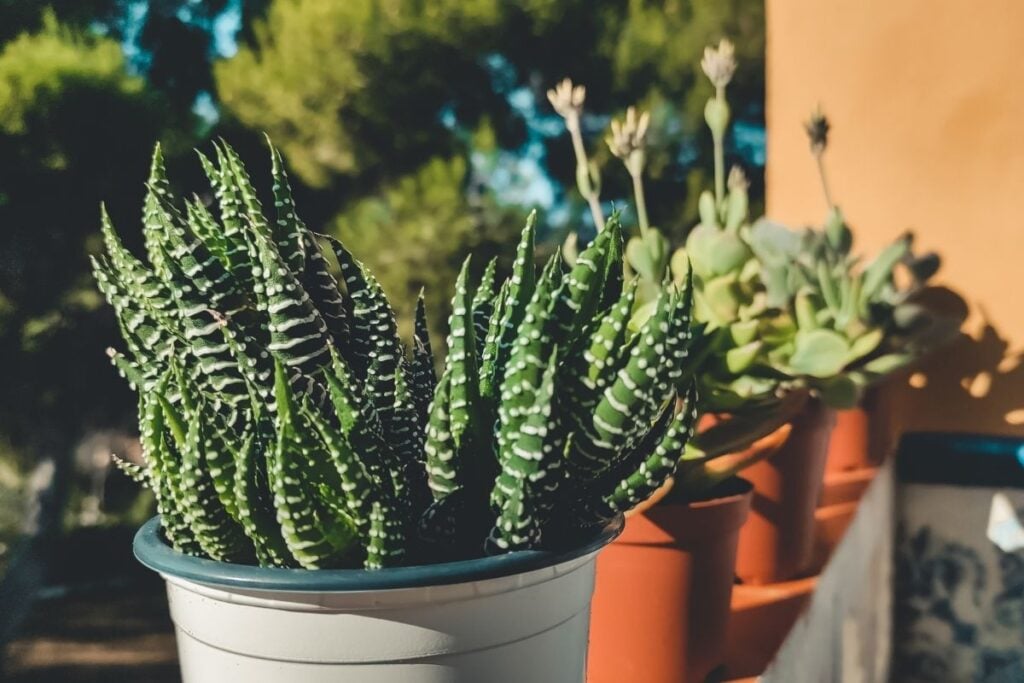
If you have grouped plants or kept some potted plants near Haworthias for increasing humidity, remove them immediately if the weather is already humid.
It will increase ventilation and decrease humidity.
But if you have not done any of the above, you don’t have to put in any extra effort for increasing the airflow.
If your plant is outside, it will receive adequate air circulation.
But if they are inside, keep them in an open area.
Don’t place them near the kitchen, bathroom, aquarium, or heatwaves.
Keep them near a window where a cool breeze enters through the window.
Also, make sure not to expose them to direct sunlight.
Final thoughts
Haworthias don’t like high humidity. They can store moisture in their leaves. Giving them more moisture can lead to rotting.
But, increasing humidity by the methods discussed above is necessary when the weather gets too dry for these succulents.
Generally, Haworthias grow well at a humidity range within 25-40% or 50%. Some varieties grow bigger and fleshier at high humidity.
But if the humidity level decreases below this range, improve it by misting, grouping, creating levels with other plants, and placing water trays and pebble trays.
The moment you find signs of high humidity in the weather, stop increasing the humidity. Also, increase air circulation around the plants to reduce the humidity.
When your plant is getting high humid conditions, take special care of them. Water it less, give them some hours of morning sun daily, use well-drained soil, add pumice to the soil, avoid peat moss and increase ventilation.
FAQs
How often should I water Haworthia?
Haworthias need watering once after 2-3 weeks.
They can retain water in their leaves and thus do not require too much moisture.
It is another reason for their low demand for humidity.
Always check the soil moisture before watering. If the top 1-2 inches of the soil is dry, the plant is ready for watering.
Also read: How Often To Water Haworthia? (Haworthia Water Requirements)
Does Haworthia need direct sunlight?
Though Haworthias can tolerate direct sunlight, they don’t need it.
Haworthias do best under bright indirect sunlight.
If you want to give them direct sunlight, which is required when the plant gets high humidity, let them have direct light of the early morning sun for 2-3 hours.
Other times, keep them in filtered sun.
Reference: The Haworthia Society, Botanical Studies, University of Wisconsin-Madison, Sciencedirect, Researchgate, Haworthia Study.
